|
Join our TikTok Contest:
1. You must be a student enrolled in one of our courses! 2. Follow us on TikTok https://www.tiktok.com/@edunovela 3. Please use this video we provide. Duet this video or use the sound to create your own dance or music. video. Be sure to use the hashtag #edunovelacontest 4. Be creative! There are no instructions. The most interesting video will receive a $75 Amazon gift card. 5. The last day to enter will be May 15th at midnight Eastern Time. Students can follow us on Instagram to get the directions: Follow us @edunovelastudents Don't forget we also have a Teacher Instagram: Follow us @edunovelateachers Please be sure to see the rules on Instagram. They can also be viewed on our Facebook page.
0 Comments
Increasingly, baseball players are recruited from Spanish-speaking countries and must learn English quickly; however, retired player Brain Dozier felt it was his duty to bridge the gap by learning Spanish himself. Dozier used a popular language tool that taught him mostly basic and formal vocabulary, which he felt was unhelpful in actual conversations with his teammates, who frequently used slang words or phrases. Unlike most tools, EduNovela’s curriculum utilizes meticulously edited authentic television shows like Silvana sin lana to exemplify how people use Spanish in everyday life, providing a balanced amount of formal and slang vocabulary. Using authentic media with Spanish-only subtitles, motivates students to learn while immersing them as a bystander in conversations. With our packages, students receive tailored vocabulary lessons, worksheets and just enough grammar in context to increase their comprehension and speaking. With a program like EduNovela and practicing with his teammates, Dozier would have had a more thorough learning experience.
If you received the ACTFL Smart Brief today, you likely saw that a new article discusses the value of watching TV for input. We could not agree more!
You can check it out by clicking here. The really cool thing about DuoLingo is that it's founder, Luis von Ahn, is a native of Guatemala! If you have any Spanish students who are interested in coding, math, and computer science, check out the new podcast on my personal favorite podcast series with Guy Raz on NPR, "How I Built This."
Though I am not a big fan of DuoLingo for acquiring language, it certainly can be good for student practice on the go. Once you get beyond the semi-cringe-worthy errors that your students see with AI-created language technology, it is after all, a good, free tool for schools who can't afford other technology. If your student does not want to listen to a one hour podcast (though I highly recommend it for Luis's great personality), here is a short article from the BBC. 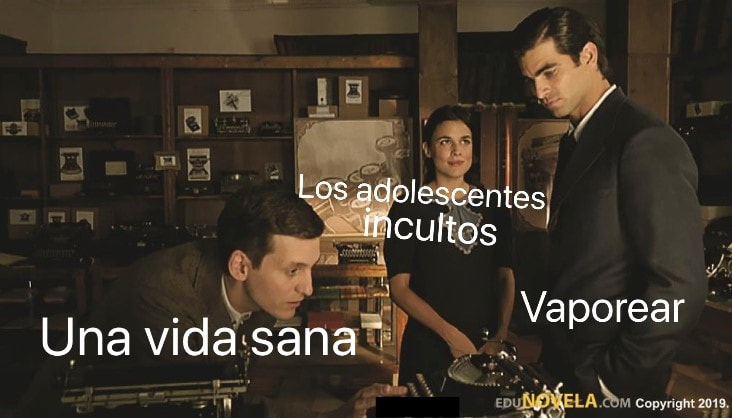 CONGRATULATIONS TO ASHLEY W AT JONATHAN ALDER HS IN OHIO FOR WINNING OUR ANTI-SMOKING/VAPING MEME CONTEST AND A $75 AMAZON GIFT CARD. VERY CREATIVE! ¡FELICIDADES! TO LEA K. AT GREAT NECK HS IN NEW YORK FOR HER TIMELY AND FUN QUARANTINE MEME. SHE WINS A $50 AMAZON GIFT CARD. A BIG, FUN MUCHAS GRACIAS TO TYLER H FROM JONATHAN ALDER HS IN OHIO FOR HIS FUN GRAN HOTEL "BROMANCE" THEMED MEME. HE ALSO WINS A $50 AMAZON CARD.
THANK YOU TO EVERYONE WHO ENTERED. IT WAS FUN. STUDENT MEME CONTEST!! Assign as a fun task or simply share with students who would like to enter.
Winners will get a $75/$50/$25 Amazon gift card and will be featured on our social media pages (first name and school name only!). All entries are due to us by April 20. Be sure students follow the directions. Students may only enter once, and must use the images from the program they are enrolled in. The theme of the EL TIEMPO meme contest is to create an anti-smoking and/or anti-vaping meme with one of the provided images. One winner will receive a $75 Amazon gift card. OR...create a fun meme for El tiempo and win a $25 gift card. The theme of the Silvana sin lana and Gran Hotel contests are open. Please use one of the provided images. The first place winner will receive a $50 Amazon card! See details here on this link and please share these with students. See previous posts here for last year's winners! Felicidades to St. Mary's High School Lancers in Lancaster New York! One of St. Mary's classrooms won a $100 Amazon Gift card for helping us choose the new credits for our upcoming Intermediate Spanish production of
El tiempo entre costuras. We appreciate the participation of all the classrooms who voted. Here is the new opening credits sequence we created for the program, a spy drama set in Madrid, Morocco, and Lisbon during the Spanish Civil War and WW II. Sira is a dressmaker of great talents who becomes a spy for the British as they work to keep Spain from entering WWII on the side of Hitler and the Nazis. Like all of our productions, we chose one that has a strong, independent female lead. See our new opening sequence here. Smoking is NEVER romantic and it is not cool, even for Julio! A $75 Amazon gift card is awarded to Samantha S. at DaVinci Science Academy in California for her anti-smoking/vaping meme for Gran Hotel. ¡Felicidades! What great creativity for a tough subject matter. We added a second runner up, a $25 card for Eliza C. at Maryville HS in Tennessee for her outstanding entry. Our Silvana winners: First place for a $50 Amazon card goes to Eric T. at The Wheeler School in Rhode Island! and a $25 card goes to Zachary S. at Archbishop Mitty in California: ¡Enhorabuena! We also added another second runner up for a $25 Amazon card because they were all just too funny. Congrats to Lindsay L. at Roswell High School in GA.
Please share these with your students. They will also be on our Instagram pages shortly. ¡Muy chistosos! How can we help Venezuelans? Hire a freelancer.
You likely saw the news today that there was a large, Live Aid aid concert for Venezuelans planned by Richard Branson just over the border in Cucuta, Colombia. How that aid will get into the hands of the people was not yet shared. One can only hope that it will happen quickly and effectively. The economic situation is more than grave with little or no assistance is being allowed into the country. The International Monetary Fund predicts inflation will hit 10 million percent in Venezuela in 2019. There is little medicine or food. The price of ordinary goods, which are scarce, is skyrocketing daily. Family members must stand in long lines (known as “colas”) for hours waiting to buy a bag of rice or flour for exorbitant prices. While one family member must make the time for this, another is searching for work. However, there are few jobs. Unemployment is tremendous, and even with a job, a month’s wages for some workers can only buy a bag of rice. A gut-wrenching interview on CNN with two Venezuelan mothers, one a nurse and the other an attorney, shows that they have turned to prostitution to feed their children and their elderly parents. How can we help Venezuela in small ways? Hire a freelancer. Venezuela is a country full of intelligent, gifted, professionals, many of whom are unemployed or who desperately need additional work. It is a small step, but it can make a difference for many families. Translating is the most obvious task for which you can find thousands of matches. Also consider using a freelancer for everything from ordinary office tasks that can be done remotely such as transcription, presentations, and spreadsheets, up to more major part-time tasks such as accounting, video editing, graphic design, coding, programming, customer service response, and tech help response. Check out websites and convince your employer to do so as well. See Guru.com and Upwork.com, just to name a few and choose the country manually. Many of these professionals work for as low as $8 US per hour. Pay them what is fair, of course. Or, when first hiring a new freelancer, pay the requested rate and then offer a bonus if the job is good. It is a simple process to enroll as an employer with these online services and there are thousands of talented freelancers waiting to do their best work for you. As you can imagine, we chat a lot with many teachers every week. One of the questions we get asked the most is unrelated to our products.
"What are your favorite spots in Miami?" Of course you need to check out the beach but there is so much more in Miami! Here are a few videos from the Travel Channel to show you some of the more reasonably priced places to go in Miami on a teacher's budget. Check out these videos on the Travel Channel's Facebook. This one shows some hidden fun places and this one as well. For a look at the free beautiful water views, Wynwood Walls outdoor art murals, and parks plus other free things to see and do check out this one. And, instead of staying where all the fancy hotels are on the water, try staying in Doral and then Ubering your way to the water. By doing so, you can stay at a far nicer hotel at a better price, and get a better feel for people. We also frequently stay at a mid priced hotel in Coral Gables. Or if you want to rent a car once you are in Miami, you'll save so much money by staying off the beach and also renting a car away from the airports such as in Doral. Miami is one of the most diverse cities in the USA, and really the business capital of Latin America, and much of that happens in Doral and Coral Gables. Our personal favorite restaurant where we always stop is Havana Harry's Cuban restaurant in Coral Gables. You'll feel just like you've landed back in the 1950's. Be sure to order a café cubano and the lechoncita! While in Miami be sure to check out the stunning mansion/museum Vizcaya and the hanging gardens at the PAMM, Perez Art Museum Miami. Both are on the water and have fabulous views. If the lines are long at Vizcaya, buy your tickets on line while you wait in line, and you can leap ahead of everyone. Assign as a fun task or simply share with students who would like to enter.
Winners will get a $75/$50/$25 Amazon gift card and will be featured on our social media pages (first name and school name only!). All entries are due to us by Feb 20. Be sure students follow the directions. Students may only enter once. The theme of the Gran Hotel meme contest is to create an anti-smoking and/or anti-vaping meme with one of the provided images. One winner will receive a $75 Amazon gift card. The theme of the Silvana sin lana contest is open. Please use one of the provided images. The first place winner will receive a $50 Amazon card and the second place, a $25 gift card. Click here for details. All entries are due to us at [email protected] by Feb 20, 2019. We have exciting news. Coming for August 1, 2019 Boomerang and Atresmedia's recent Spy Drama El tiempo entre costuras will be available in classrooms and for remote assignments. It is a war-time drama based on the New York Times bestseller of the same name. We have leveled the project for your students in Spanish 2-4 or for intermediate independent users. It is currently available only on EduNovela.com! We are offering Spanish-only subtitles for your students' growth in fluency and listening skills.
You will have all of the same features you have with Silvana sin lana and Gran Hotel such as vocabulary cards, Pre and Post readings, rich classroom discussion activities, and more. The learning system will be the same as what you use for your current program, with each episode being approximately 15 minutes in length and 42 episodes in total, subtitles in Spanish only. The project has been extensively tested in high schools in California with great success with all students alike. The male students, in particular, were intrigued with the connections to the wars and the spy factor. If you are not familiar with this beautifully filmed spy drama set primarily in Madrid, and also The Spanish Protectorate of Morocco, and Lisbon in 1936-1941, we are providing a sneak peek at the trailer. Sira Quiroga is a 20-year old seamstress in Madrid just prior to the start of the Spanish Civil War. Due to her social savvy and talent, she becomes a dress maker to the Nazi wives living in Spain and Morocco. Sira becomes a key to the British success in keeping the Nazis from luring Spain into WW II. The story is based in part on the real-life characters of Rosalinda Fox and Juan Luis Beigbeder, a high ranking Spanish official who counters Franco in his efforts to drag Spain from the Civil War into WW II. Other optional, historical materials will be included for your students. You may access our custom-made opening credits here on our YouTube channel. If you need a Quote for your school for the school year for any of our products, feel free to contact us via our contact tab. TRAILER El tiempo entre costuras We get this question every once in a while from teachers. We do not buy into any one methodology or approach. This system we developed surfaced after many years and internal studies over those years of trying various ways to deliver authentic media to students, primarily freshmen and sophomores at Northwestern University in the late 1990's and early 2000's.
Group showings of authentic media were not working for us, yet we liked using authentic media. Students saw the action and loved the use of real TV shows, but their comprehension was very low. They could still discuss the storyline if given the vocabulary, nevertheless their speaking did not improve because they were not developing the vocabulary that they needed nor were they hearing/seeing grammar in action. Thus we made the switch to 1:1 learning in 2000. The core motivator for us was "How do we make authentic video comprehensible to students?" and then next, "How do we get them to discuss it?" at their own level, and if applicable, "How can they use what they heard in relation to discussing their own lives?" We saw the value of authentic media: super high engagement (motivation to learn!) and seeing/hearing input from native speakers as if they were eavesdropping in on conversations. As a result, we wanted to get students speaking in the classroom. Our students, like most college students who use EduNovela.com, accessed our programs outside of class time as a remote "lab." A short side note: it is worth a mention that we also wanted them to be accessing authentic media on their own outside of class without it being assigned as homework. For example, we hoped they would seek out TV, movies, music and anything they could read. And they did! Our yearly surveys showed that our students were motivated to do even more work on their own outside of the assigned video. We liked the fundamental ideas behind Comprehensible Input, but we did want to get students talking. Everyone does not agree with us that basic Spanish students should be talking. We love that our students can chat about the video storylines in Spanish in class and then we can use that as a point of departure for anything applicable to that week's goals or tasks. Now, we also like a quick spontaneous online conversation to be posted on a tool like FlipGrid. Later, classmates can go back and comment as a follow-up. Our ideas behind EduNovela.com are practical. We used best practices from research and we applied them to our own need. Little academic jargon is presented in our Teacher and Curriculum guides found in El salón de los profesores. We do not claim to be academics in the ivory tower doing research on the benefits of our products. We are all real Spanish teachers-- professors, lecturers, and high school instructors who believe in the power of a great continuing story in the classroom. If you are a high school teacher, you may ask, is EduNovela.com one of those tools that I can have my students use in class and I can sit back and grade papers? NO! This is not a babysitting tool. It requires the teacher to be a very active part of the class. 1:1 learning does not exclude the teacher. If you use an EduNovela.com storyline in your classes as part of the class time, be sure to stop your students every segment or two to check in. There are comprehension questions, but do also pull in something from your current textbook chapter. It should not be used disconnected from other items you are utilizing in class that week. There will be a great camaraderie that comes from using a single, continuing storyline in your classes! In colleges, your students will watch out of class, nonetheless, use it as a tool to build a camaraderie amongst students, get them talking in class, and milk the storyline as best you can. Make it applicable to your students' real lives. They won't all travel to a hotel in northern Spain where there is a serial killer, but many do travel. There is so much that can be used in your daily textbook and grammar chat: meals, families, relationships, ser vs. estar, etc. See the Gran Hotel Teacher and Curriculum guide for ideas! Would you like to preview just a few of our hundreds of free classroom activities? We offer highly customizable classroom activities that can be printed as handouts or posted to your own LMS or shared by email. To see a few samples, go to Teachers Pay Teachers to the EduNovela.com page by clicking on the link above for TPT.
 We are very excited to announce our second program for August of 2018: Gran Hotel from Atresmedia Series and Bambú! As with our first product for high school, Silvana sin lana, we will offer a "just-right-fit" for the college or advanced high school academic year: 42 episodes. Our version of Gran Hotel is not only edited for appropriate length and content, but also for interest. We focus on storylines that your college students will love whether watching in class, in their dorm, apartments, language lab, library, or purely online. Our methodology includes Spanish only subtitles with help functions. Each episode contains approximately 20 minutes of highly engaging video, made comprehensible for this level of students. Like Silvana sin lana, we offer our EduNovela.com media player that enables each student to work at her or his own speed. We highly recommend that non-native students listen at 75%. This does not affect the quality of the audio or the video, but it does enhance their comprehension. If you have heritage learners, they can listen at normal speed. While watching Gran Hotel, your students will have access to our introductory readings, front-loading important cues. Each reading also comes with a multi-speed narration in multiple Spanish accents, males and females, for quicker fluency. We provide small chunks of video with vocabulary and scene quizzes for quick comprehension check-ins. When completed, each episode has a 5-point quiz that is sent to the instructor's gradebook along with "time on task." The user's individual growth will be tracked for them. Schools set their own schedules, releasing the video according to your unique syllabus. Do we sell Gran hotel for Upper levels of High School Spanish? Yes, we sell Gran Hotel for Spanish 4/5/ and A.P. Please contact us for details and high school pricing via our Contact form. Check out our free samples of Gran Hotel on our Products' page. How do EduNovela.com's programs differ from the Netflix or Hulu versions? Most of our TV shows are quite lengthy in the original version, some as long as 145 hours. We offer highly edited, classroom-friendly versions of your favorite programs, and of course, we make them comprehensible for Spanish students at various levels. We have a variable speed control player, perfect for non-natives. We highly recommend 0.75% (when there is not a great song playing). We do not offer English subtitles, but you will find subtitles in Spanish. Our team of real professors and teachers create many other features to make our stories comprehensible for your students: narrated readings, scene quizzes, vocabulary, grammar, and more. We will also have more than 200 free exercises in our shared space called "El salón de profesores." And what about AP? Yes! We have exam-specific activities for each lesson. Coming for August of 2018. We are getting quite a number of questions about our methodology. Thank you for asking, and yes, we are excited to give more details about it as a framework for your class. Whether using one of the new EduNovela TV programs as a supplement to your existing materials, or whether tossing out those expensive text books and websites, you will find our products applicable. Please also read our earlier blog posts about how to fit EduNovela.com into your own school, on your schedule.
We are excited to share with you the dynamic classroom you can create using a continuing online story, and even more exciting, one that is authentic and fresh. If you saw our presentation at ACTFL, you heard about our previous success using this methodology for 15 years at Northwestern University starting in 2000. If you ever used the great 1993 made-for-classroom series Destinos, you know the value of a continuing storyline. We loved Destinos. (Check out our earlier blog posts.) If you teach high school, you'll likely remember the 1996 La Catrina or the lesser known Cuarto misterioso. Though those are all made for the classroom, surely your students still enjoyed the break from the monotony of the text. In my own classes, my students generally watch one episode of Silvana sin lana (the EduNovela.com version of the NBCUniversal Telemundo production) in class on their own devices with earbuds and one episode for homework, alternating as we go. This is great for high school classes that meet frequently. Though, I've lately been selfish and I've been wanting them to watch more in class. It is simply too much fun for me to teach. As we get more into grammar, I find that I can pause everyone after they watch each scene and work in my grammar lessons with easily crafted questions and activities (think possessive adjectives, por vs. para, comparatives, and the like). For college classes, we definitely recommend, as we have done at Northwestern University, out-of-class as the best time to watch. Your class periods will be full of conversation covering what they watched in their dorms or at home! How is it that students can start speaking the L2 in the first week of class, even in Spanish 1? If you don’t need to teach Spanish in the order that most traditional textbooks tend to present it, because it is not mandated for you, why not try the EudNovela.com teaching methodology? It can fit any textbook but you may wish to give this a try... We immerse your students immediately into vocabulary that they need to support conversation from the first day of classes, talking about the tv show and about themselves. Why do most beginning textbooks start with a list of 30 words for classroom objects like ruler, pencil sharpener, pencil, pen, and map? Those are words your students will learn from hearing you say them every day in your classroom; no need to memorize them. Try starting with our vocabulary lists. (See the "Reading Help" section of our samples.) Imagine a textbook or even sections of your current textbook where you start as we do with the subject pronouns, the family words, the verb ser and the adjectives of physical appearance and personality. That way your students can start speaking about their real world right from the first day. After all how much conversation can you have about a pencil sharpener or a ruler? Classroom words do not provoke conversation. With EduNovela.com, the students are speaking about the storyline, but of course, you will lead them into conversation about themselves and their lives. Imagine that your next few lessons were estar plus emotions and feelings and tener with a few expressions including tener que and deber plus infinitive. You will continue to grow their vocabulary about people (friends, relationships, professionals) and ir plus add frequently visited places such as home, the rooms, school, some of the various rooms of your school, and the like. Start using regular ar/er/ir verbs to state what is happening and daily activities. Add the negative and you've doubled their speaking ability. You will also throw in some verbal expressions like ir + a + infinitive, creer, pensar, that give us an option to talk about events. You’ve just increased their ability now to speak in the present tense and the future and to describe what’s going on along with what’s not happening. Then instead of moving immediately through the textbook from regular ar/er/ir verbs through stem changing verbs, and more irregular verbs they will rarely ever use (think caber!), give them only the high frequency verbs for mastery. Continue adding words such as household words, again things that are very real to them such as furniture, clothing, cleaning, food, meals, and shopping. Little by little go back to your textbook and explain some of that grammar. This way by the end of your first semester in Spanish 1 along with watching a continuing storyline about family and including people their age, parents, grandparents, siblings, teachers, principals, you will find your students have maximum vocabulary to talk not only about the TV show but also about themselves. In Spanish 1, high school or college, with this methodology as the framework, my students can go the entire class without breaking into English, and in most cases without even asking questions. You can go back to the book frequently to fill in gaps like adjectives of nationality, pronunciation of countries, and other such items. Give us a try! See our 3 sample episodes, posted under "products." This is a big (and good) question. Perhaps it is best answered by peeling back the layers a bit and discussing comprehensible input (CI). What is it?
Professor Stephen Krashen is the person who first used this term in the 1970's to explain his theory of language acquisition. If you are new to comprehensible input, check out this short video on YouTube. He uses German as an example to highlight his point. See how you do with his lesson! There are many good resources on comprehensible input for shifting your classes. We will be blogging on those frequently. You will notice once you start using more video for CI your students' listening skills grow quickly. Combined with reading, your students' growth in speaking moves at a fast rate as well. It can be challenging for a few students but it is worth the effort. Authentic video is highly engaging. Students will feel excited and rewarded that they can watch it. Once they get wrapped up in a great storyline, they will continue to be motivated. As the teacher supporting them, remind them that as in real life, look for visual cues, tone of voice, gestures, and the context of the scene to help follow the storyline. They will also understand more once they get to class and hear discussion. Within a few weeks, they won't be yearning for English subtitles any longer. And when they see those long fill in the blank verb paragraphs you may be giving on tests, don't worry-- they get the context right away. Our "Salón de Profesores" (faculty lounge) will be filled with activities for the classroom, test, quizzes, and the like, coming for August 2018. You can share with teachers at other schools if you like or simply use our creations. Don't forget to show your users of any video the differentiated speed tool that accompanies some media players, for example on YouTube (but sadly not yet in Netflix). Where these are present, the user can slow down the video speed to make it more differentiated and comprehensible to non-native speakers. In our EduNovela.com media player, we recommend that once the credits roll and the music ends, the user switches to 0.75 speed. Yet, if you have heritage speakers in your classroom mixed in with non natives, they will prefer to listen at 100%. If a student needs to focus on a particular word or sentence (or even as a targeted listening activity), the user can slow down to 0.50 speed. This is the same on YouTube for any videos you might want to show in class. When using the prototype projects for EduNovela.com, projects that included both reading and a continuing telenovela storyline, instructors reported a high rate of growth for both listening and speaking skills. They also reported a notable difference in their classes' outcomes the following year if not using the program. Our teachers in our test schools and our authors will be blogging about this in the months to come. Stay tuned!  We were asked this question recently at ACTFL: Why are there not more people of color on Spanish TV? I wish we could answer this easily, but not unlike American TV and film, there is definitely not a great diversity of peoples shown on TV. We did recently come across a few diverse music videos we'd love to share with you for your own classes. Music seems to be the only industry that truly shows the Spanish speaking world as is, so as teachers we all seem to embrace it. And everyone loves music. One video we are really into right now is Sofia by Alvaro Soler filmed in La Habana, Cuba. The dancing is amazing! (Be careful to preview Sofia before you show it in your classes as there is a little bit of daring dancing and clothing.) Though not quite as diverse as Sofia, we also really like Robarte un beso (so cute). Here in Southern California we not only enjoy our Taco Tuesdays after school with colleagues, but we really like Miércoles de música in Spanish classes. My first Miércoles de música experiences were in Sevilla, at la Universidad de Sevilla. My own students love fan Humberto Contreras's posts for Just Dance in Spanish. We often use this as a break in a long block! Though Daddy Yankee's videos are diverse they are not really always appropriate for the classroom so Just Dance is helpful. Check out a lot of great teachers on Pinterest in their Wednesday music activities, though the title of the day varies. We also came across a multi-cultural Venezuelan youth telenovela from 2009 online called Amor urbano on YouTube. You may want to show some snippets to your students. (Be sure to preview it for yourselves.) There are a few other shows featuring characters of color, though not many. As we find them and preview them, we will make you aware. There are a few new series coming out from Latin America with diverse characters, for 2018. We will update you. Latina beauty brands do offer more of an array of products that consider diversity. We recently read on Apple News that "Latina entrepreneurs have undoubtedly been on the rise. Time reported in 2016 there’s been a 137 percent increase in Latina-owned businesses, a larger rise than in any other demographic in the U.S. Chicas also seem to be cornering the market on creating quality beauty brands, having founded cosmetic lines that have received recognition and made a lasting impression on the beauty world with their inclusive shades and innovative products." We also found Melt cosmetics owned by a young Mexican-American woman and offering a multi-cultural array of shades. Your students may want to read up on her as she apparently is the make-up guru for Rihanna. Here is an article on NBC news. EduNovela.com has invited a guest blogger, Jenniffer Whyte to join us. Jenniffer is a native Dominican high school teacher who grew up in New York and Miami. She teaches Spanish in Anniston, Alabama at The Donoho School. We can't wait to see what exciting topics she will bring to the blog. Jenniffer is a frequent presenter on adding more genuine multi-culturalism to Spanish classes. Feel free to post questions for her as well. Welcome, Jenniffer! The EduNovela.com Team  We had some questions at ACTFL about how we managed to fit a 42 episode video and reading program into our school year in both college and high school. We loved Destinos when it was fresh (and I still love Destinos!-- did you know it is online free?) but it was a bit long at 54 episodes. Additionally, it had quite a lot of video for one sitting. This was great for those of us who learned from Destinos in the 1990's before the pace of life became faster. If you are a non teacher who is reading this to learn Spanish, check out Destinos online. It is fabulous for adult learners. All of our EduNovela series will differ greatly in content, but one aspect they have in common is that they are delivered into manageable chunks. Each episode has about 15 minutes of video and takes approximately 30 minutes total to complete. This varies since it is 1:1 and the user controls much of his or her experience. Though, note that most students finish in under 30 minutes. (As you see the samples, you'll notice the first episode is slightly longer for the sake of interest of the storyline.) We also offer an auditorium style viewing of the Grand Finale if you wish! We cannot tell you how much fun this has been over the years, even having students come dressed as their favorite characters. In college, we have students watch purely outside the classroom if only meeting in class 3 days per week. It is a great way to connect the students with language on the days we do not have classes, and even for snow days. My students always said it was the best part of any homework and they waited until they were done with all other homework to watch the show. If you teach purely online or blended learning, you will love using our programs. They have a short quiz that gets submitted directly to the instructor's grade book. It includes questions from the two short readings as well as the video for a well-thought-out experience. Next day in class, the fun really begins! Students come in chatting and leave excited to do their work. (You can also spread a few out over the long holidays. They can watch from almost any where in the world.) I vary how I assign lessons when I use this methodology with high school. Given the great number of times we meet face to face, I can use it in class once per week. I can assign these outside of class, and even on days with a sub, thus there is no issue of getting to all 42 done, only the issue of there not being enough lessons to satisfy the students! What I skip now in my textbook is a lot of boring stuff. They learn the word for pencil, pen, notebook and the like from me using it daily and teaching only in Spanish. Using names of characters that do not exist and that my students cannot connect with is no longer an issue. With the storytelling capacity this methodology brings, I create sentences to teach vocabulary, do verb lessons, or even any grammar such as the object pronouns. My classes almost teach themselves due to the storytelling nature of the programs. We are most excited about our free teacher-shared activities. Not only will our authors share free activities in el Salón de Profesores, but we hope teachers will join in as well. We really envision this will keep down expenses for those of you strapped to those expensive online sites and textbooks. (As a parent, I can't imagine paying $180 again for my freshman in high school's supersite!) For us, the storyline of the telenovela or series is the base of much conversation in the classroom, but certainly not all, in both high school and college classes. We tried to find TV series that connect to the real lives of your students or the times we are living in, even if the series is historical in nature. Feel free to reach out to us at any time with more questions like this. The Edunovela.com Team Why use a continuing series or a telenovela in your classes of all levels of Spanish for an entire academic year? Our programs are flexible and fit a variety of schedules and configurations for in class work, student work out of the classroom, blended learning, or purely online use.
When the prototype was first created for Elementary college Spanish, it was imperative to find a show that had a range of characters of all ages and types along with compare and contrast amongst the characters. Typical telenovelas certainly have opposing characters but many storylines can be bad and very formulaic. We are so excited to have these new, more modern series and novelas for your students. (Our first projects for High School and College 1 both just ended their broadcast in 2017!) They have been picked with great care to reflect the Spanish-speaking world in a more positive light than found in older telenovelas (extremely poor vs. extremely rich and the like), or the more violent narco series and shows that are popular with native audiences. This is not to say any fun is lost from what a typical telenovela might offer, but you will be pleasantly surprised to see that some Spanish TV now favors more a continuing series format than a telenovela such as our parents’ generation enjoyed. In August of 2017, I interviewed Prof. Sue Pechter of Northwestern University, and Senior Editor of EduNovela.com. We discussed the use of the prototype project developed by a colleague of Sue's, a year-long authentic telenovela, in her Spanish 101 classes for many years. Here are her responses: When using the prototype program for EduNovela.com, why was it so successful for so many years? Sue replied, “The continuing storyline really engaged the students. “The show included interesting multigenerational characters with scenes of daily life (eating, celebrations, shopping, school, etc.) which effectively worked to both tie in and broaden our text topics.” Why is a continuing series or telenovela more engaging than something made for the classroom? Sue replied " The show was exciting and edited to leave cliffhangers at the end of many episodes. The students actually looked forward to doing their Spanish homework! They came in to class chatting about the previous episode and speculating about what was going to happen. They were very relieved to discover a Spanish telenovela has a conclusion. After the year long course, many students in second year Spanish mentioned that they missed using the novela.” Was your teaching made easier with a continuing series for an entire academic year? Sue replied, "In class, it gave us a topic to use for discussion along with activities that interested everyone. I normally find it challenging to find topics that engage the whole class-– not everyone cares about the weekend sports events, music, etc. It greatly enhanced student participation during class." Thank you, Sue for your insights! |
AuthorsEduNovela.com authors offer their insights! Archives
May 2021
|
Brought to you by TreeFrogPublishing.com

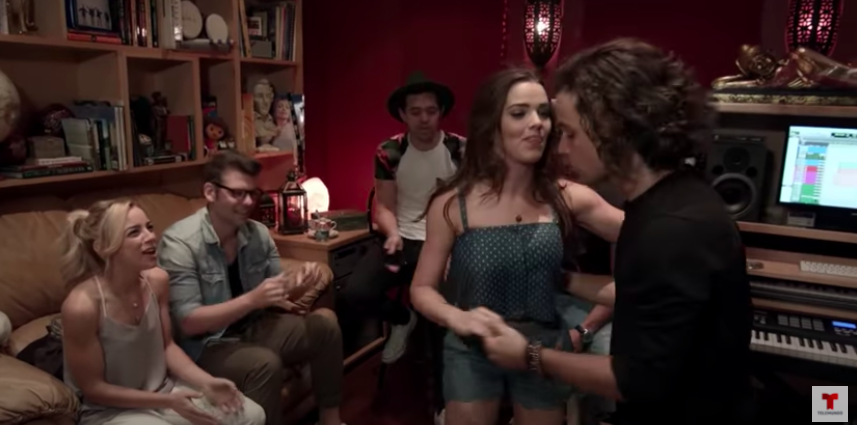

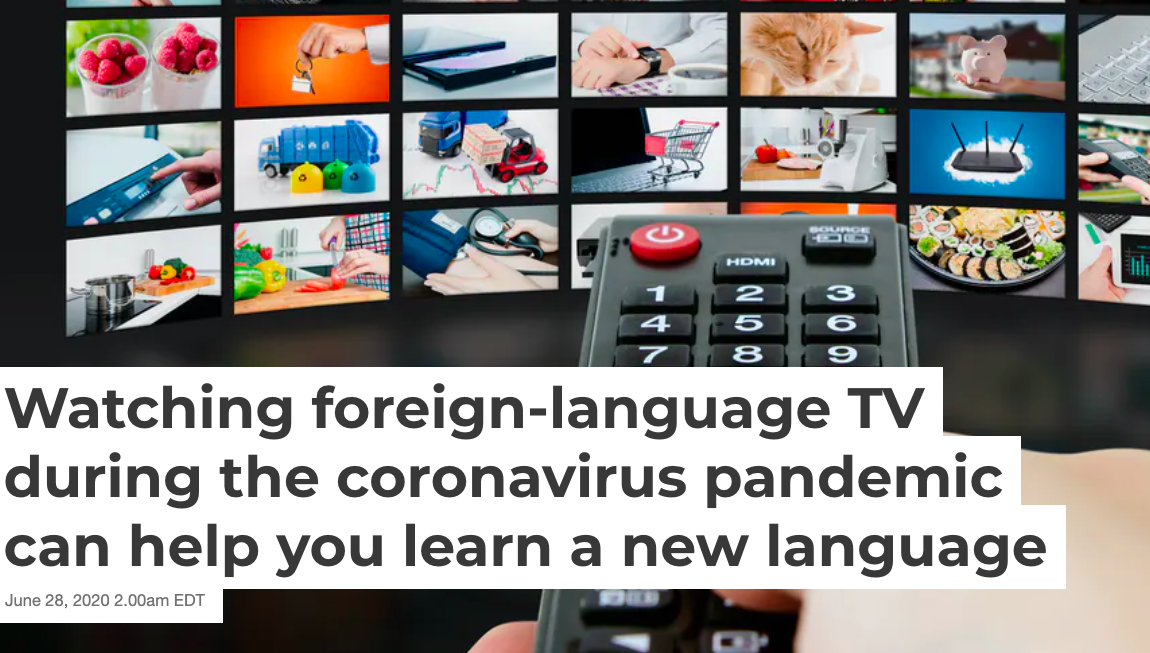
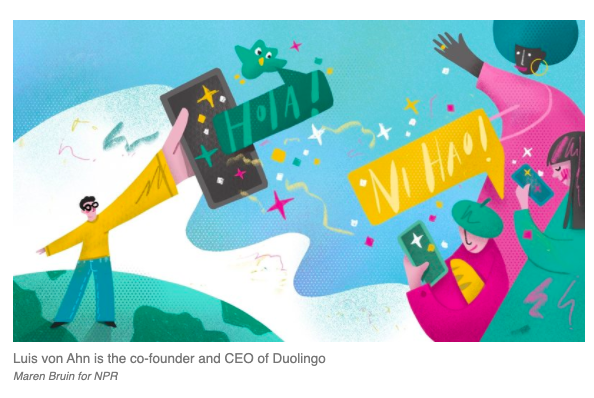
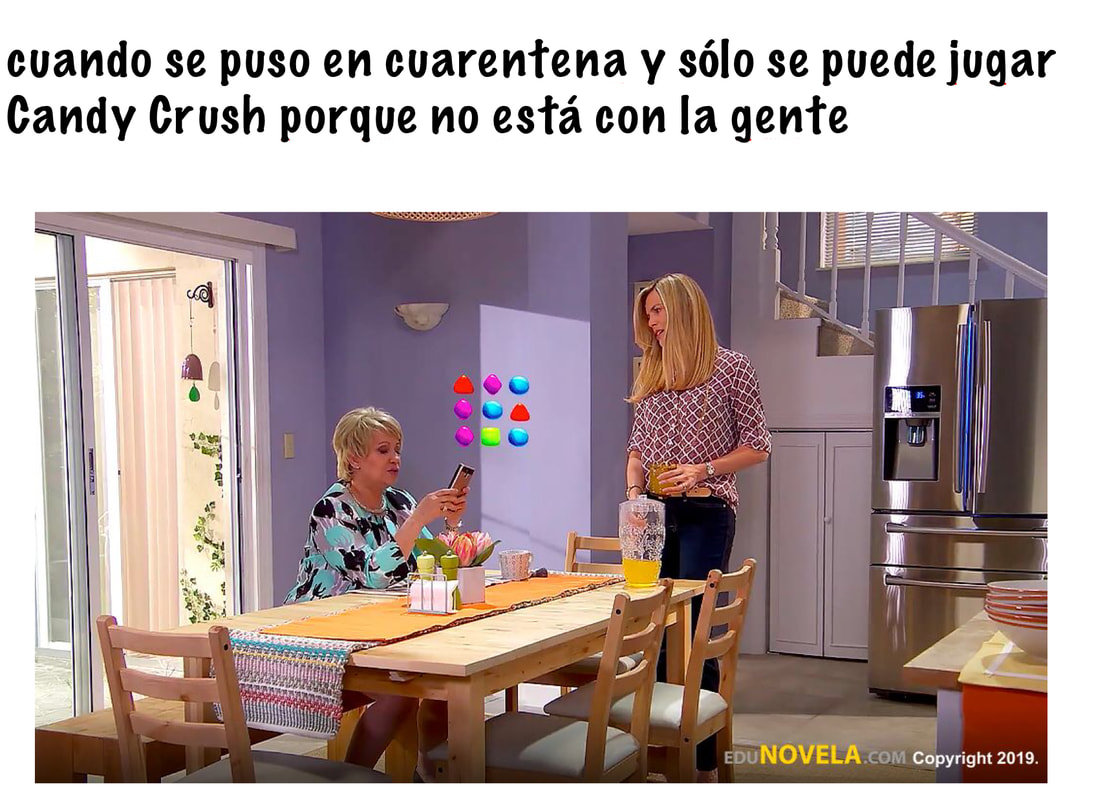
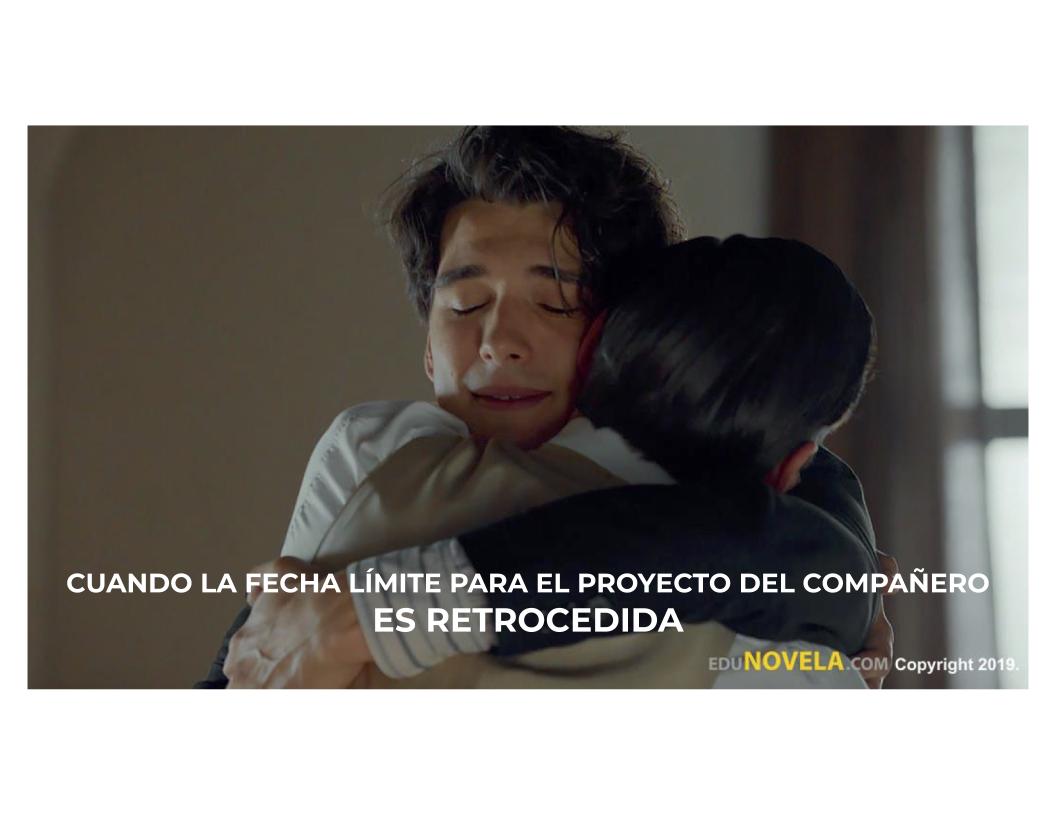

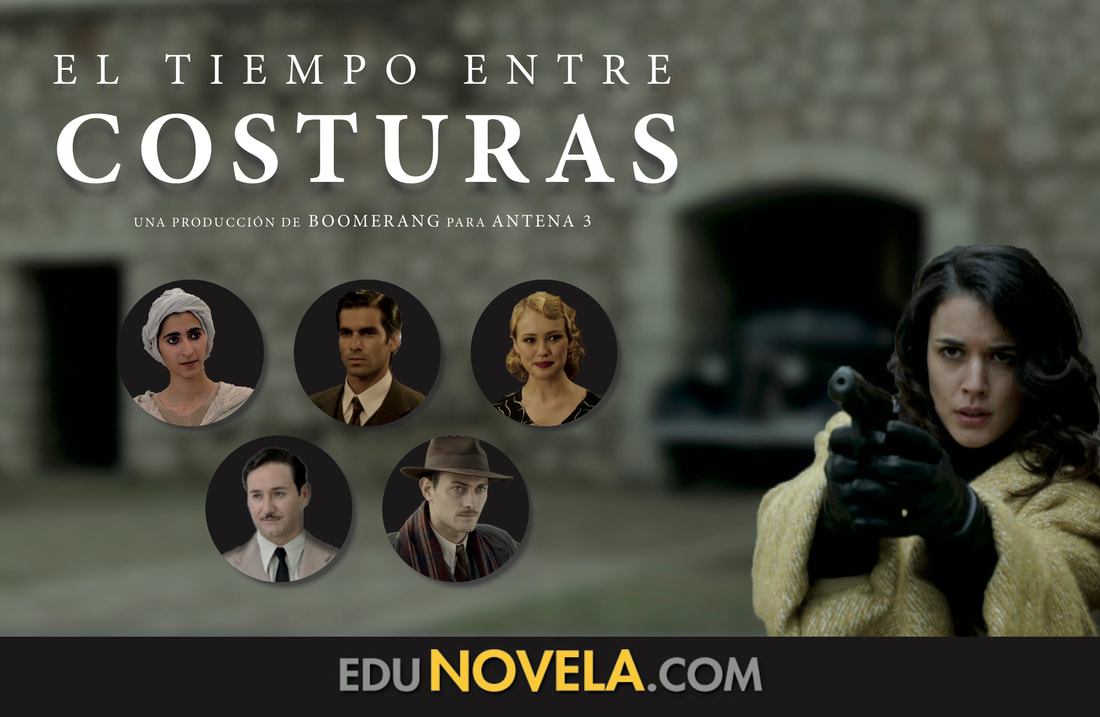
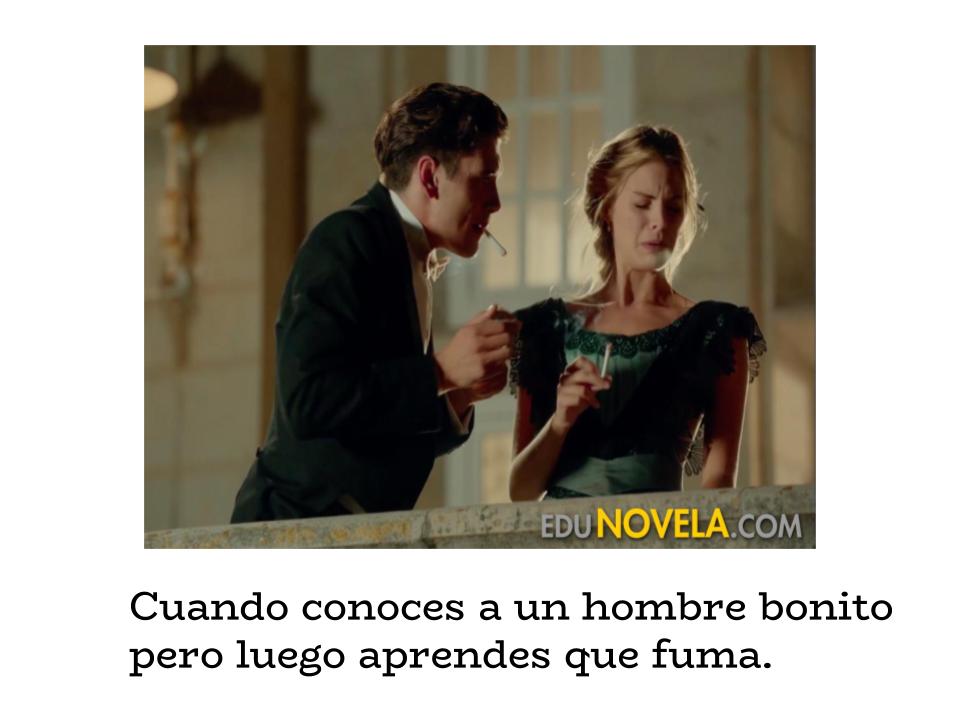
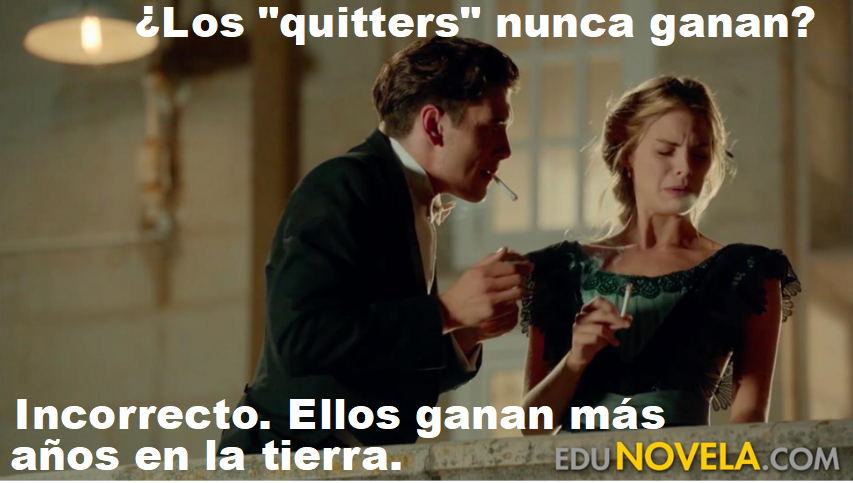
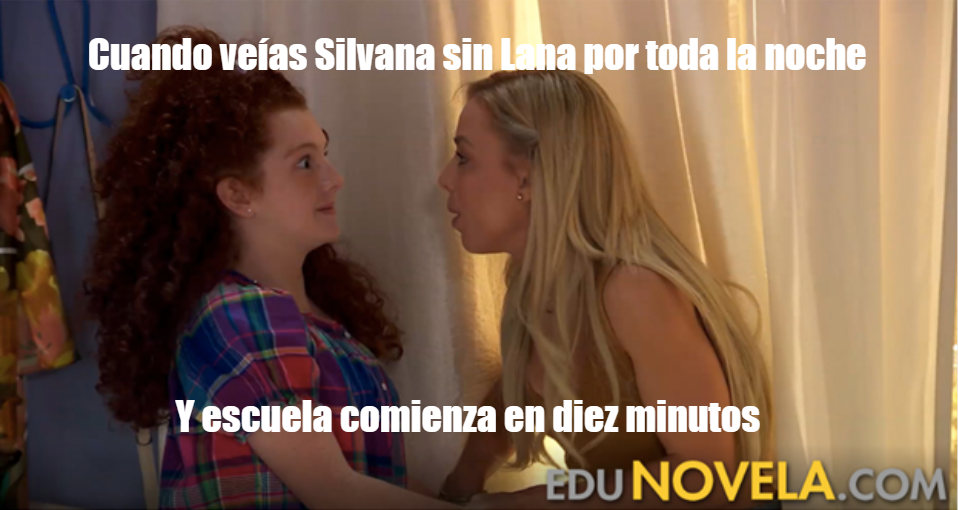
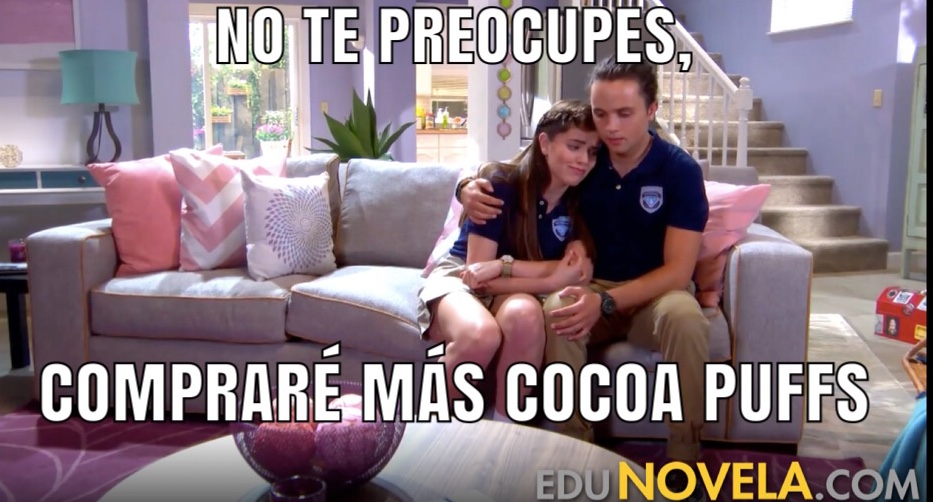
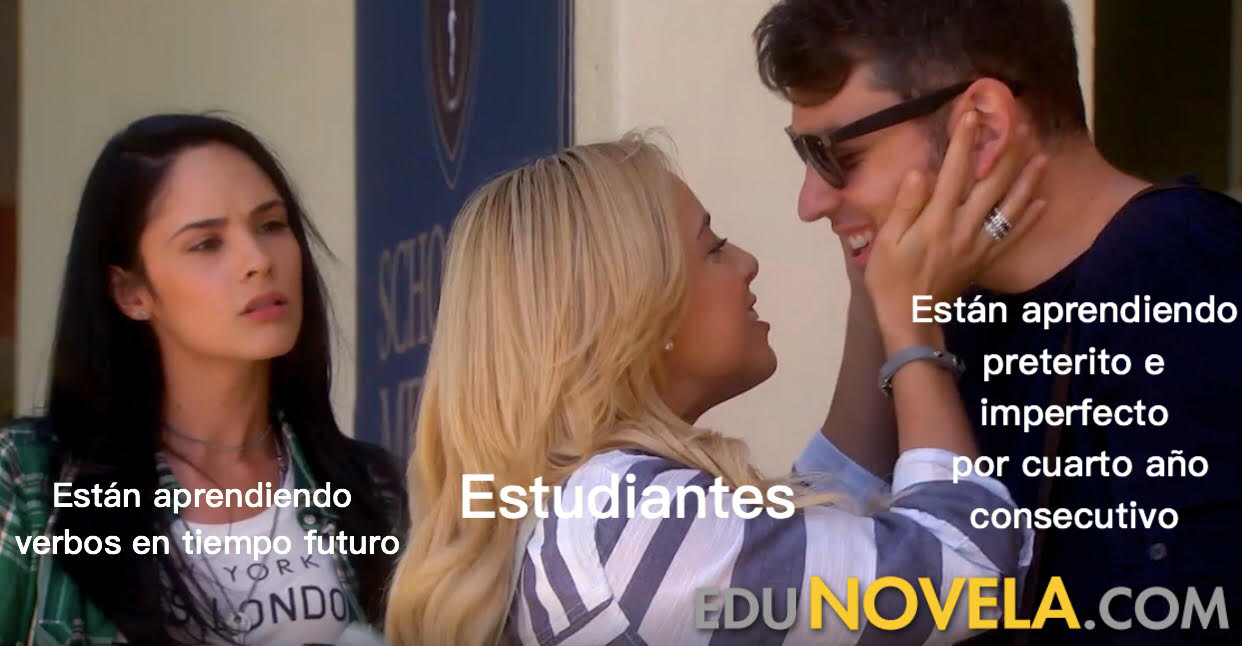
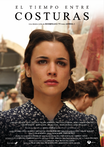
 RSS Feed
RSS Feed